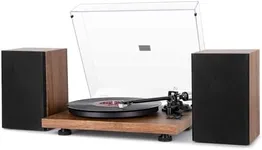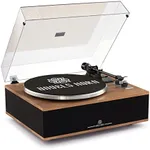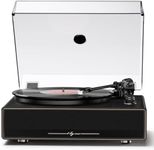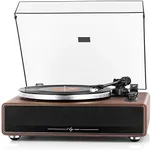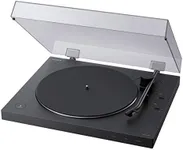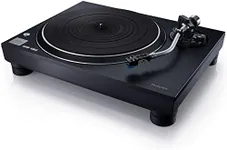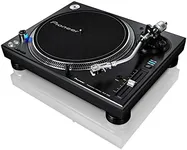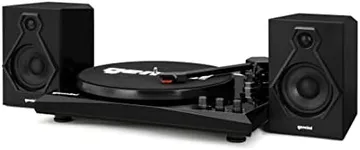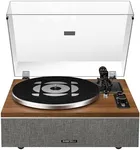Buying Guide for the Best Record Players
Choosing the right record player can greatly influence your enjoyment of vinyl records. With several styles and features to consider, it’s important to be clear about what matters most—such as sound quality, ease of use, and how much manual interaction you want. Understanding the main components and specifications of record players makes it much easier to decide which matches your lifestyle and listening habits. Focus on the key features below to narrow down your best fit.Drive TypeThe drive type refers to how the platter (where the record sits) is powered and spun. The two main types are belt-drive and direct-drive. Belt-drive uses an elastic belt to spin the platter, which can reduce motor noise and is usually favored by listeners who prioritize sound quality at home. Direct-drive models have their platters attached directly to the motor, providing quick start-up and higher torque, making them popular with DJs or those who need precision. For general home listening, belt-drive is often preferred for its quieter operation, while direct-drive suits more frequent handling or performance use.
Manual vs. Automatic OperationThis spec relates to how much you need to do when playing a record. Manual turntables require you to place the tonearm on the record and remove it at the end, giving you full control but needing more attention. Automatic and semi-automatic models can lift the tonearm and return it at the end, which is more convenient and beginner-friendly. If you like having hands-on control and don't mind the extra steps, manual might appeal to you. If you want a hassle-free experience or worry about accidentally scratching your records, automatic is a safe bet.
Cartridge and Stylus TypeThe cartridge is the component that holds the stylus (needle), and together they read the grooves of your records. There are different shapes and quality levels—moving magnet (MM) and moving coil (MC) for cartridges, and elliptical or spherical for stylus tips. Higher quality cartridges/styli can offer clearer sound and less wear on your records. If you are just starting out or listening casually, a basic pre-installed cartridge will do fine. If you have a keen ear or collect rare records, you might soon want to upgrade to higher-end needle options.
Built-In PreampA preamp boosts the signal from the record player to a level that regular speakers or amplifiers can use. Some record players have a built-in preamp, so you can connect them directly to powered speakers or most sound systems. Without a built-in preamp, you’ll need a separate external preamp. For most beginners or if you want a simpler setup, a model with a built-in preamp is very convenient. If you are building a custom audio system or want the best possible sound tweaking, using a separate preamp may appeal to you.
Speed Options (33, 45, 78 RPM)Speed options refer to the ability of the record player to spin records at different rates: 33 and 45 revolutions per minute (RPM) are the standards for most albums and singles, while 78 RPM is for older records. Make sure your record player matches the formats you intend to play. For most modern users, 33 and 45 RPM are enough. If you plan to play vintage or specialized records, ensure your player also supports 78 RPM.
ConnectivityConnectivity means how you can hook up your record player to other devices or speakers. Common options include standard RCA outputs, USB (for digitizing records), and Bluetooth (for wireless playback). If you want to use wireless speakers or digitize your collection, look for built-in Bluetooth or USB. For a straightforward wired setup, traditional outputs work well. Your mode of listening—wired vs. wireless, analog vs. digital—should guide what connections to prioritize.
Platter MaterialThe platter is the rotating base for your record. Its material affects vibration and sound quality. Common materials include plastic, aluminum, and acrylic. Plastic is lighter and more common in entry-level models, while heavier materials like aluminum and acrylic can reduce unwanted vibrations and improve playback stability. If you’re aiming for the highest possible sound quality or stability, choose a model with a heavier, high-quality platter.
